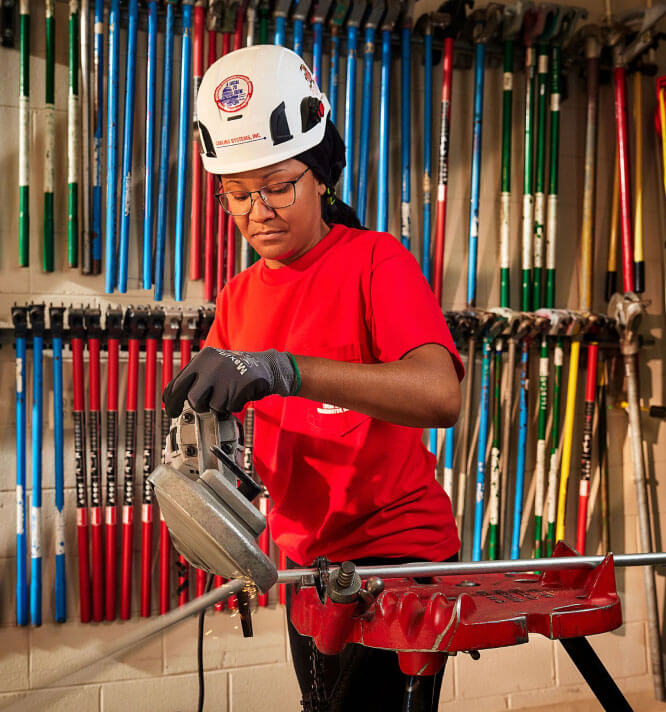
Survey shows less than half of high school students are opting for 4-year college degrees in favor of more career-oriented training programs.
For generations, high school students have felt societal and personal pressures to get a four-year college degree. According to 86% of high school students, that pressure still rings true today. But, it turns out, less than half of these students are actually considering pursuing such degrees.
ECMC Group’s Question the Quo Education Pulse surveys examined high schoolers’ attitudes about their future work and education throughout the pandemic. The surveys, conducted in partnership with VICE Media, included students ages 14-18. They were conducted in February 2020, May 2020, January 2021, and September 2021 to see how the teens’ thoughts around education and work shifted in the pandemic environment.
Students are saying “sayonara” to 4-year college
Between the fundamental shifts in education caused by the COVID-19 pandemic and the lack of on-the-job learning provided in traditional college, students are changing the way they think about post-secondary education. Instead, they’re prioritizing options that offer a stronger direct connection between education and their career.
ECMC’s latest survey, conducted in September 2021, showed that the number of teens planning to attend a four year college continues to decrease. Less than half are now considering a four-year college degree, even though 86 percent feel pressure to pursue one.
A direct connection to a sustainable career is key
While tuition cost remains a big factor in choosing a school, one of the biggest takeaways from the survey is that a direct connection to a sustainable, well-paying job also ranks as a top factor. Students are extremely focussed on the connection between education and a future career, with 69 percent saying it is important to have on-the-job experiences like apprenticeships and internships.
The survey also showed that more than three quarters of students think about their education and career beyond high school at least weekly and half think about it daily. In addition, 53 percent of students surveyed believe they can achieve professional success with an education that is three years or less.
“These insights indicate teens are extremely tuned in to their future career path but need to know more about the education it takes to get there,” Jeremy Wheaton, president and CEO of ECMC Group, told Contractor Magazine. “Their focus has shifted on their future, weighing what matters most and cutting out the unnecessary. We have an opportunity to illuminate the pathways from high school to postsecondary education, on-the-job learning and careers, and the value education still holds for the future generations of workers.”
A different path: Electrical Alliance and Joint Apprenticeship Training Committee
These survey findings aren’t exactly surprising. After all, there truly is more than one path to success and the traditional classroom experience isn’t for everyone—not to mention the thousands of dollars in student loans that come with it.
With so many more students now rethinking a traditional four-year college degree, the Electrical Alliance and Joint Apprenticeship Training Committee (JATC) program continues to ignite the careers for even more young people as they enter the workforce. This program trains the electrical and telecommunication workers employed by contractors of the IBEW Local 26 union, which covers the Washington, DC metropolitan area and central to southwest Virginia.
While not all students in the JATC programs are recent high school grads, many are. The program gives these students the ability to directly practice their trade while they learn so they can put their skills to work before graduating (unlike traditional college). For instance, students could learn a skill on Monday and apply it on the job the next day.
Program graduates have the opportunity to earn top dollar anywhere in the U.S., and even to transition from field work to the professional arena as a foremen, estimators, project managers, contractors or business owners. Like college, students have to apply to be accepted—not everyone is cut out for this competitive field. Unlike college, graduates are guaranteed to be well-certified for jobs in their field—and it won’t cost tens of thousands of dollars or require SAT scores for admittance.
Program Details: The JATC Tracks
The JATC offers three fully subsidized tracks that combine cutting-edge classroom and lab-based education with hands-on, in-the-field experience, putting apprentices on a path to great pay, best-in-class benefits and job security with growth potential.
Track 1: Inside Electrical
Inside Electrical is a 5-year program that gives students the perfect balance of instruction and on-the-job training. This is the most popular track chosen by recent high school graduates. Upon completing the program, students have an earning potential of over $96,000/year plus over $40,300 in health and retirement benefits.
During the first four years of the program, students attend one class every other week covering topics such as Ohm’s Law, AC/DC theory and fiber optic theory. For the remainder of their time, they are on the job site, applying the skills they’ve learned in areas like conduit bending, brand circuit wiring, panel and switchgear installations, and fire alarm and security systems. In their last year, they attend two electives while continuing on-site training.
Track 2: Residential
The Residential Track is a 5-year program that gives students the opportunity to work for top electrical contractors in the Washington Metropolitan area and become a member of a first-rate organization. Students get hands-on experience in the field performing branch circuit wiring, light fixture, receptacle and panelboard installation, and blueprint reading. They also get related classroom instruction one night per week in the first two years. Graduates walk out with an earning potential of over $52,440/year plus $24,733 in health and retirement benefits.
Track 3: Telecommunications
The Telecommunications track is a 3-year program that kickstarts careers as a Teledata/IT networking technician. For the first two years, students attend class once every other week while working with electrical contractors in voice-data-video installations. In their last year, students take electives and continue on-the-job training. Graduates walk out with an earning potential of $57,100 annually, plus $22,973 in health and retirement benefits.
Start your career (or help a young person do so!)
The JATC program is an excellent option for young people seeking a lifelong career (with great pay) that can’t be outsourced, without the burden of student loans. The JATC runs its accredited program in its main state-of-the-art facility located in Lanham, MD. They also have a training facility in Manassas, VA and Roanoke, VA.
The apprenticeship is very competitive and applicants must have strong math and science skills, and pass a test and interview to be accepted.
Head here to learn more about JATC. Applications are accepted year-round.




